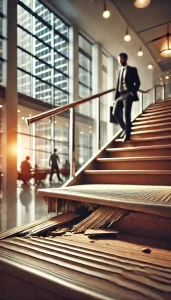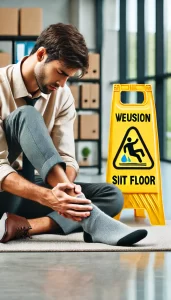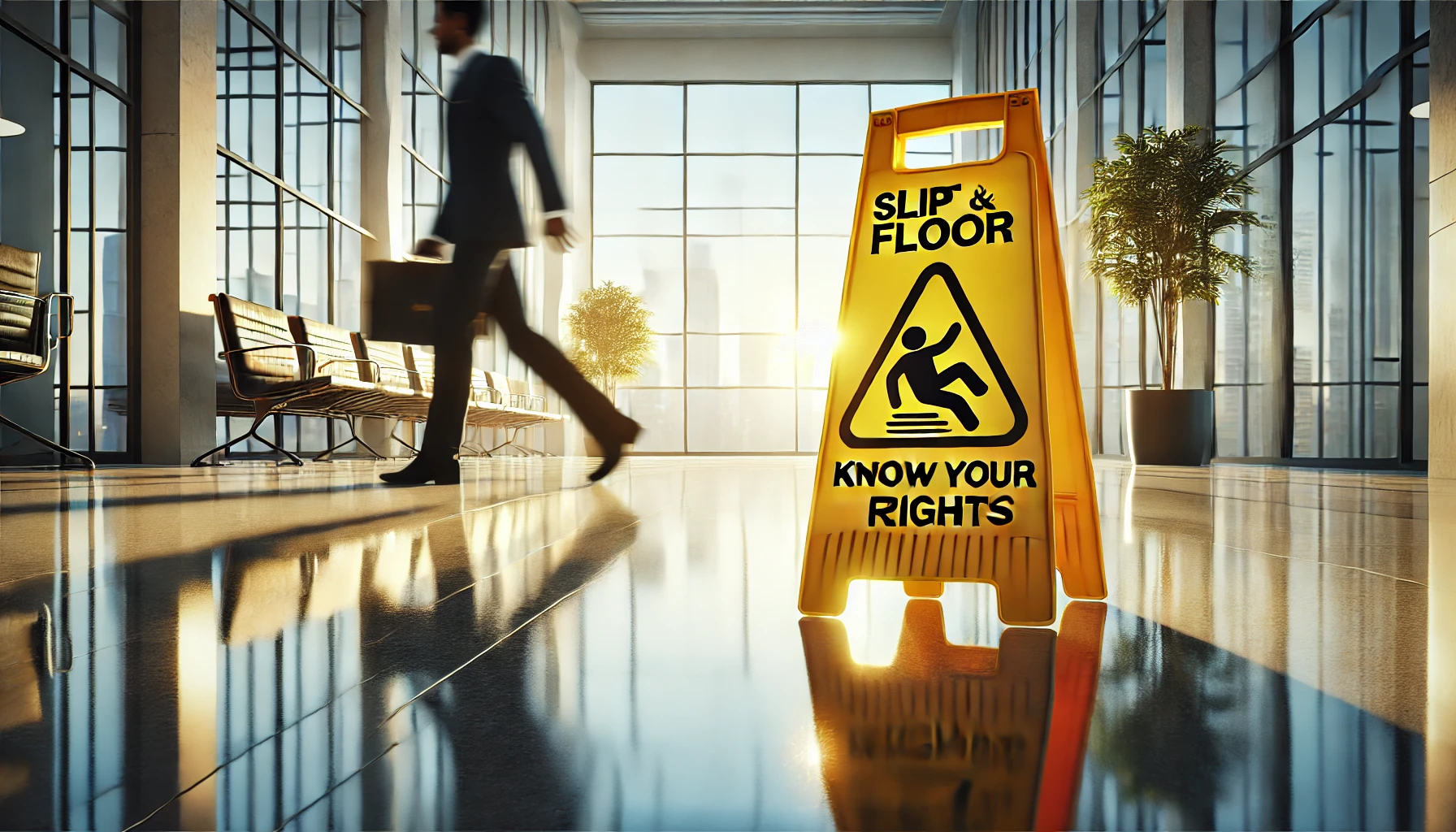- admin
- Personal Injury
- January 20, 2025
Slip and Fall Injuries: Know Your Rights
Slip and fall injuries are some of the most common personal injury claims, but they can also be some of the most misunderstood. These accidents often lead to serious injuries that disrupt lives, yet victims frequently do not realize they have legal options to seek compensation. In this guide, we’ll explore premises liability, common hazards, and how to pursue justice if you’ve suffered a slip and fall injury.
Understanding Premises Liability
Premises liability is a legal concept holding property owners and occupiers accountable for maintaining safe conditions on their premises. When they fail to do so, and someone is injured as a result, they may be held liable for damages.
Key Elements of Premises Liability:
Duty of Care: Property owners owe a duty of care to visitors, meaning they must take reasonable steps to ensure safety.
Negligence: The injured party must prove that the property owner was negligent in maintaining the premises or addressing known hazards.
Causation: There must be a direct link between the owner’s negligence and the injury sustained.
Damages: The victim must have suffered measurable harm, such as medical expenses, lost wages, or pain and suffering.
Common Hazards Leading to Slip and Fall Injuries
 Slip and fall accidents can happen anywhere, but certain conditions are more likely to contribute to these incidents. Knowing these hazards can help you stay vigilant:
Slip and fall accidents can happen anywhere, but certain conditions are more likely to contribute to these incidents. Knowing these hazards can help you stay vigilant:
Wet or Slippery Floors: Unmarked spills, freshly mopped surfaces, or leaks can create treacherous conditions.
Uneven Surfaces: Cracked pavement, loose floorboards, or rugs without proper backing are common culprits.
Cluttered Walkways: Items left in pathways, like boxes or cords, pose significant tripping hazards.
Poor Lighting: Dim or non-functioning lights can obscure obstacles and uneven surfaces.
Weather-Related Hazards: Snow, ice, and rainwater accumulation are common issues that require immediate attention from property owners.
Common Injuries from Slips and Falls
Slip and fall accidents can lead to severe injuries, impacting victims physically, emotionally, and financially. Some of the most common injuries include:
Fractures: Broken bones, especially in the wrist, hip, or ankle, are frequent outcomes.
Head Injuries: Concussions or traumatic brain injuries (TBI) may result from a hard impact.
Spinal Cord Injuries: Falls can damage the spine, leading to chronic pain or even paralysis.
Soft Tissue Injuries: Sprains, strains, and bruises might not seem severe but can cause long-term discomfort.
Lacerations: Deep cuts from sharp objects or jagged surfaces may require stitches or further medical treatment.
Steps to Take After a Slip and Fall Injury
If you experience a slip and fall, your immediate actions can significantly affect the outcome of a legal claim. Follow these steps to protect your rights:
Seek Medical Attention: Your health is the priority. Prompt medical care ensures your injuries are documented and treated.
Report the Incident: Notify the property owner or manager and obtain a written incident report.
Gather Evidence: Take photos of the hazard, your injuries, and the surrounding area. Collect witness information if possible.
Preserve Documentation: Keep records of medical bills, lost wages, and any correspondence related to the incident.
Consult an Attorney: A skilled slip and fall injury lawyer can guide you through the legal process and help build a strong case.
Property Owner Responsibilities Under the Law
 Property owners have legal obligations to maintain their premises and prevent harm to visitors. Their responsibilities include:
Property owners have legal obligations to maintain their premises and prevent harm to visitors. Their responsibilities include:
Regular Inspections: Identifying potential hazards through routine checks.
Timely Repairs: Fixing issues like broken stairs, leaking pipes, or uneven flooring promptly.
Clear Warnings: Using signage or barriers to alert visitors of temporary dangers, such as wet floors.
Adhering to Local Codes: Ensuring the property complies with safety regulations.
When property owners neglect these duties, they put visitors at risk and can be held accountable for resulting injuries.
Pursuing Compensation for Slip and Fall Injuries
Victims of slip and fall accidents may be entitled to compensation for their losses. Working with an experienced attorney is crucial to navigating this complex process. Here are the key components of a slip and fall claim:
Determining Liability: Establishing the property owner’s negligence.
Calculating Damages: This includes economic damages like medical expenses and lost income, as well as non-economic damages like pain and suffering.
Negotiating Settlements: Many cases are resolved through settlements, but a skilled attorney will also prepare to go to trial if necessary.
Case Study: Winning a Slip and Fall Case
Consider the example of a shopper who slipped on a wet floor in a grocery store. Despite the store’s knowledge of the spill, no warning signs were posted. The victim suffered a fractured hip, leading to significant medical bills and missed work.
With the help of an attorney, the victim gathered evidence, including surveillance footage and witness statements. The court found the store negligent for failing to address the hazard, awarding the victim a substantial settlement to cover their losses.
Why You Need Legal Representation
Navigating a slip and fall injury claim can be overwhelming without expert guidance. An experienced attorney can:
Investigate the incident thoroughly.
Handle communication with insurance companies.
Negotiate for fair compensation.
Represent you in court if necessary.
Conclusion
Slip and fall injuries can have devastating consequences, but victims have the right to seek justice. Understanding premises liability, recognizing common hazards, and taking the appropriate steps after an accident are essential for protecting your rights. If you or a loved one has been injured, consult a trusted slip and fall attorney to help secure the compensation you deserve.


